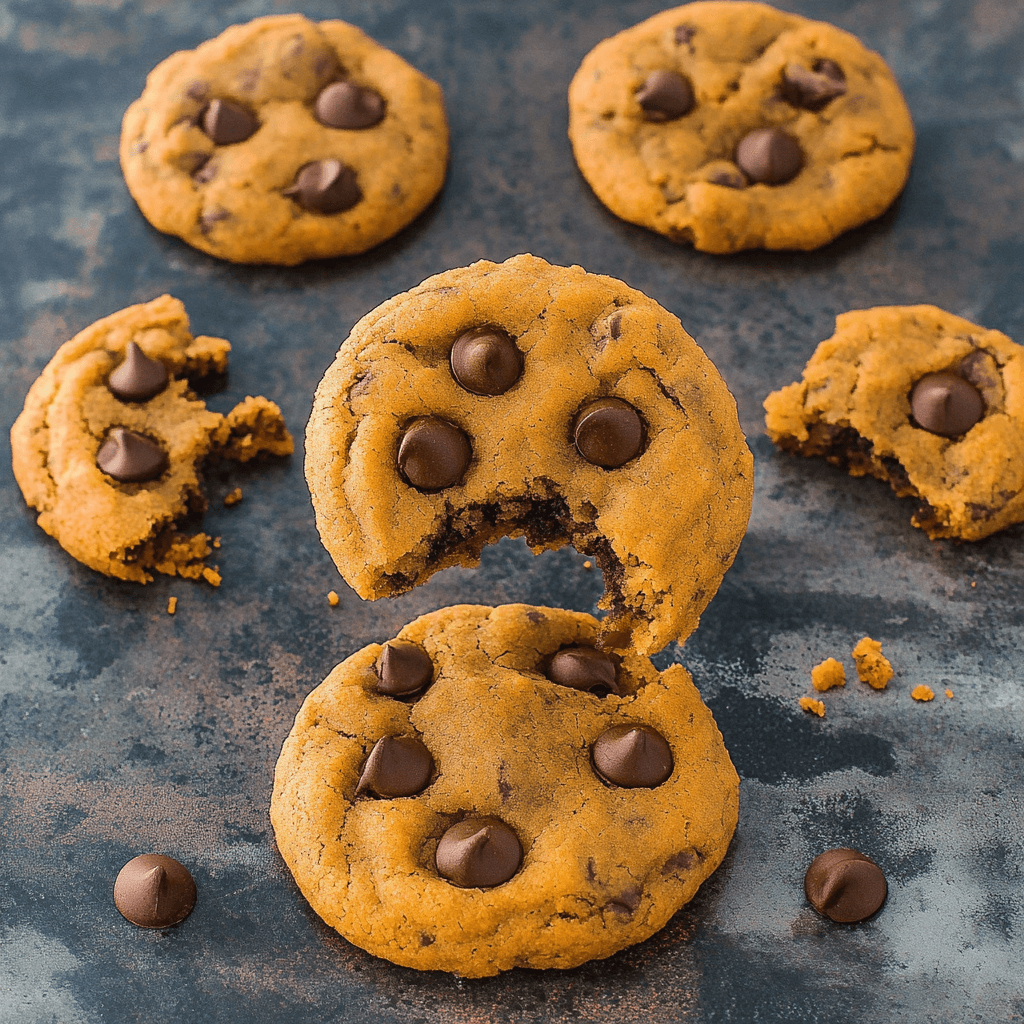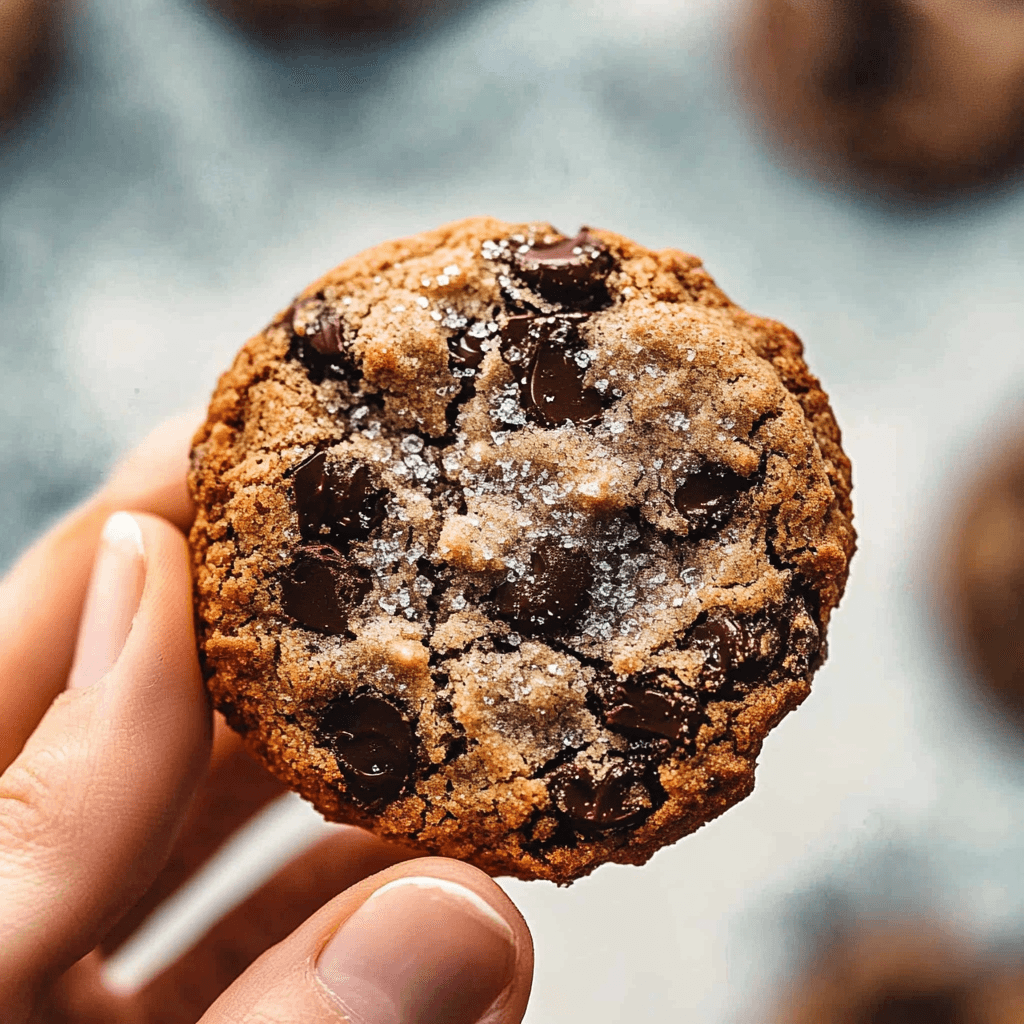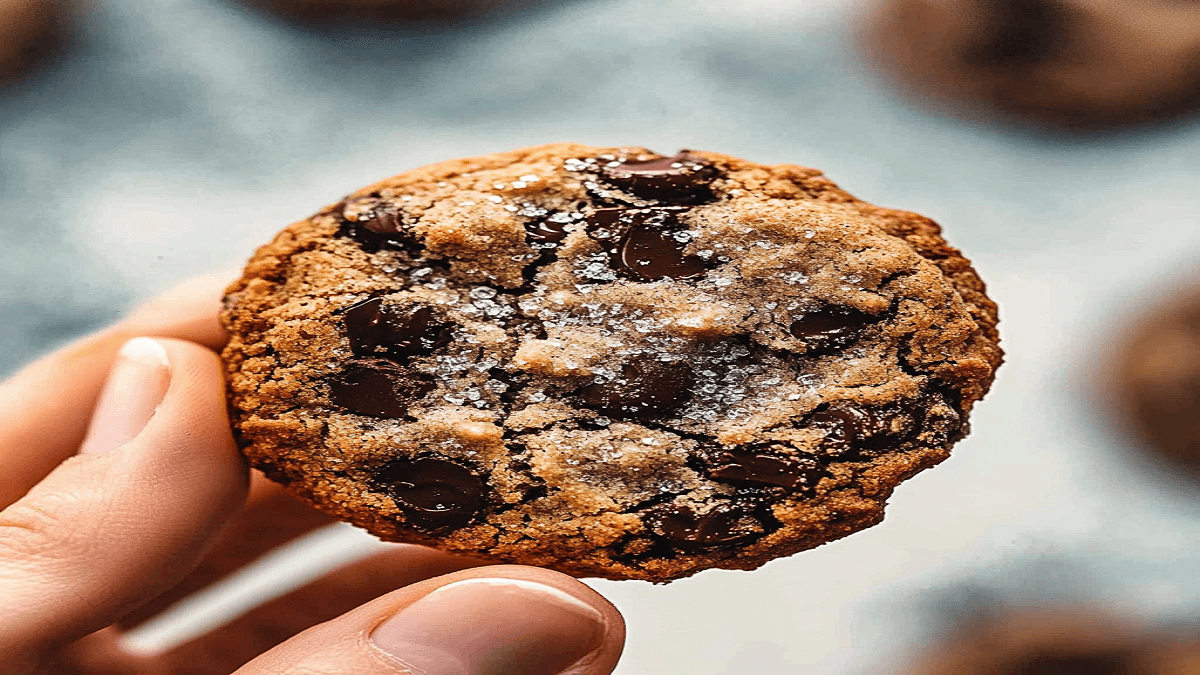Introduction
If you’re searching for a delicious yet healthy snack to fuel your day, then look no further than a protein cookie recipe. Not only are these cookies packed with nutrients, but they are also incredibly easy to make. As a result, protein cookies have become a go-to choice for fitness enthusiasts and anyone craving a guilt-free treat. In this guide, we will explore everything you need to know about protein cookies, including their benefits and step-by-step instructions for making your own.
Whether you’re a seasoned baker or new to the kitchen, learning to make protein cookies will revolutionize your snacking habits. Not only are they convenient, but they also allow you to control the ingredients and adapt to your dietary needs. Let’s dive into this comprehensive guide!
What Are Protein Cookies?
Protein cookies are a nutrient-dense alternative to traditional cookies. Unlike their conventional counterparts, they combine classic cookie flavors with high-quality protein sources, making them a more satisfying snack or post-workout treat. Furthermore, the key difference lies in their significantly higher protein content, which is often achieved by incorporating protein powder or other protein-rich ingredients. As a result, these cookies provide a balance of taste and nutrition that appeals to both fitness enthusiasts and anyone looking for a healthier indulgence.
For a twist on the traditional cookie, you can explore Earl Grey cookies, which offer a unique flavor profile, or combine the idea of nutrient-dense treats with recipes like pumpkin banana loaf for variety. Additionally, for those interested in deeper nutritional insights, check out this external guide on balancing macronutrients to optimize your diet.
Unlike regular cookies, protein cookies aim to balance macronutrients, providing a good mix of proteins, fats, and carbohydrates. They’re versatile, meaning you can customize them to suit your dietary preferences—whether gluten-free, vegan, or low-carb.
Key characteristics of protein cookies:
- High protein content for muscle recovery and energy.
- Lower sugar levels compared to traditional cookies.
- Adaptable to specific dietary needs.

Benefits of Protein Cookies
1. Supports Muscle Growth
Protein cookies are a great way to boost your daily protein intake, which is essential for muscle repair and growth. Whether post-workout or as part of your day, they help keep you on track with your fitness goals.
2. Provides Sustained Energy
The combination of protein, fiber, and healthy fats ensures that protein cookies deliver slow-burning energy, keeping you fuller for longer.
3. Customizable Nutrition
By making your own protein cookies, you control the quality and quantity of ingredients. This allows you to meet specific nutritional needs, such as lowering sugar or adding more superfoods.
4. Convenience
Protein cookies are portable, making them a great option for busy schedules. They’re a quick, easy snack to grab whether you’re heading to work or the gym.
Ingredients for Protein Cookie Recipes
To make a perfect protein cookie recipe, you need a mix of basic baking ingredients and protein-enhancing components. Here’s a breakdown:
Basic Ingredients
- Flour (almond, oat, or coconut for healthier options)
- Sweeteners like maple syrup, honey, or stevia
- Baking powder or baking soda
- Eggs (or flaxseed for a vegan option)
Protein Sources
- Protein powder: Choose a flavor like vanilla, chocolate, or unflavored.
- Nut butters: Peanut, almond, or cashew for added healthy fats.
- Greek yogurt or cottage cheese (optional).
Flavor Enhancers
- Dark chocolate chips
- Vanilla extract
- Cinnamon or cocoa powder *
For more inspiration, explore nutrient-rich recipes like purple black bean soup to broaden your healthy eating options.
Choosing the Right Protein Powder
The type of protein powder you use can greatly influence the texture and flavor of your protein cookie recipe. Not all protein powders are created equal, so here are some tips for making the right choice:
Whey Protein
- Best for a smooth, chewy texture.
- Ideal for non-vegan recipes.
Plant-Based Protein
- Perfect for vegan and gluten-free recipes.
- Can sometimes create a denser cookie, so adjust wet ingredients accordingly.
Casein Protein
- Absorbs more liquid, resulting in moist cookies.
- Works well when combined with whey.
Always check for additives or artificial sweeteners in protein powders to ensure a natural, healthy recipe.

Substitutes for Healthier Options
Healthy substitutions can make your protein cookie recipe more nutritious without sacrificing flavor.
Common Substitutions:
- Flour: Swap all-purpose flour with almond or oat flour for more fiber and lower carbs.
- Sugar: Replace refined sugar with natural sweeteners like honey, stevia, or dates.
- Butter: Use coconut oil or unsweetened applesauce to reduce saturated fat.
- Eggs: Substitute flaxseed or chia seeds mixed with water for a vegan alternative.
Small changes can make a big impact, turning your protein cookies into a health-conscious delight.
Tools and Equipment Needed
To simplify the process of creating your protein cookie recipe, gather the following tools:
Essential Tools:
- Mixing bowls (large and medium-sized)
- Measuring cups and spoons
- A hand or stand mixer for even blending
- Baking sheet lined with parchment paper
- Silicone spatula for scraping and mixing
Optional but Useful:
- Cookie scoop for evenly sized cookies
- Cooling rack to maintain crispness
- Food processor for grinding oats or blending ingredients
Having the right equipment ensures your cookies turn out perfect every time.
Step-by-Step Guide to a Basic Recipe
Here’s a straightforward protein cookie recipe to get you started. Follow these simple steps to create your own batch of healthy, protein-packed cookies.
Ingredients:
- 1 cup oat flour
- 1 scoop vanilla protein powder
- 1/4 cup almond butter
- 1/4 cup honey or maple syrup
- 1/2 tsp baking soda
- 1 egg (or flaxseed substitute)
- 1 tsp vanilla extract
- 1/4 cup dark chocolate chips (optional)
Instructions:
- Preheat Oven: Set your oven to 350°F (175°C) and line a baking sheet with parchment paper.
- Mix Dry Ingredients: In a large bowl, combine the oat flour, protein powder, and baking soda.
- Combine Wet Ingredients: In another bowl, whisk together the almond butter, honey, egg, and vanilla extract until smooth.
- Blend Together: Gradually add the wet mixture into the dry ingredients, stirring until a dough forms. Fold in the chocolate chips.
- Shape the Cookies: Use a cookie scoop or spoon to drop dough onto the prepared baking sheet. Flatten slightly with the back of a spoon.
- Bake: Bake for 10-12 minutes or until the edges turn golden brown. Avoid overbaking to keep them chewy.
- Cool and Enjoy: Let the cookies cool on the baking sheet for 5 minutes before transferring to a wire rack.
For dessert lovers, you may also want to try this easy banana brownie recipe to balance indulgence with nutrition.
Tips for Achieving Perfect Cookies
Achieving the perfect protein cookie recipe requires a balance between taste, texture, and nutritional value. Here are some key tips to guide you:
- Use quality ingredients: Opt for high-quality protein powder, fresh eggs, and natural sweeteners like honey or maple syrup to enhance the flavor.
- Measure accurately: Baking is a science; incorrect measurements can lead to overly dense or dry cookies.
- Don’t overmix the dough: Overmixing can make the cookies tough. Mix until the ingredients are just combined.
- Mind your baking time: Protein-based cookies tend to bake faster. Check them a few minutes before the timer ends to prevent overbaking.
- Add moisture: Protein powder can dry out your cookies. Incorporate ingredients like yogurt, applesauce, or mashed bananas to keep them moist.
- Let them cool properly: Allow cookies to cool on a wire rack to maintain their structure and texture.
By focusing on these techniques, you’ll consistently produce cookies that are both delicious and nutritious.
Popular Protein Cookie Recipe Variations
Creating variety in your protein cookie recipe keeps it exciting. Try these popular variations:
- Chocolate Chip Protein Cookies: Use dark chocolate chips for a rich flavor and mix them into your base dough.
- Peanut Butter Protein Cookies: Add natural peanut butter for a nutty twist and extra protein.
- Oatmeal Raisin Protein Cookies: Mix in oats and raisins for added fiber and sweetness.
- Double Chocolate Protein Cookies: Use cocoa powder and chocolate chips for a decadent treat.
- Almond and Coconut Protein Cookies: Add shredded coconut and almond slices for a tropical flavor.
- Pumpkin Spice Protein Cookies: Include pumpkin puree and spices like cinnamon and nutmeg for seasonal flair.
- Berry Bliss Protein Cookies: Fold in dried cranberries or blueberries for a fruity twist.
If you love warm, comforting flavors, pair these cookies with creamy lasagna soup for a satisfying meal.
Customizing Your Protein Cookie Recipe
Personalizing your protein cookie recipe ensures it meets your taste and dietary needs. Here’s how:
- Choose your protein powder: Use whey, plant-based, or collagen protein depending on your preferences.
- Adjust sweetness: Use stevia, monk fruit, or agave syrup to control the sugar content.
- Incorporate mix-ins: Add nuts, seeds, or dried fruit for additional nutrients and texture.
- Experiment with flours: Try almond flour, coconut flour, or oat flour for gluten-free options.
- Change the fats: Substitute butter with coconut oil, avocado, or Greek yogurt for a healthier twist.
- Flavor enhancements: Experiment with extracts like vanilla, almond, or even coffee for unique flavors.
By testing different combinations, you’ll create a protein cookie that’s uniquely yours.
Storing and Preserving Protein Cookies
Proper storage is key to keeping your protein cookie recipe fresh and delicious. Follow these tips:
- Room temperature: Store cookies in an airtight container for up to 5 days. Place parchment paper between layers to prevent sticking.
- Refrigeration: Extend freshness by storing cookies in the fridge. This works well for cookies with added yogurt or fresh fruits.
- Freezing: For long-term storage, freeze your cookies. Wrap them individually in plastic wrap, then place them in a freezer-safe bag or container.
- Thawing: When ready to eat, let frozen cookies thaw at room temperature for 20-30 minutes.
These methods ensure your protein cookies remain soft, flavorful, and ready to enjoy whenever you need them.

Common Mistakes to Avoid Protein Cookies
Avoid these common pitfalls to ensure your protein cookie recipe turns out perfectly:
- Overusing protein powder: Too much can make cookies dry and chalky. Balance it with other ingredients.
- Skipping moisture: Neglecting to add wet ingredients like eggs or applesauce results in crumbly cookies.
- Incorrect baking temperature: Baking at too high a temperature can burn the outside while leaving the inside undercooked.
- Neglecting to preheat the oven: Always preheat your oven to ensure even baking.
- Using expired ingredients: Old protein powder or baking soda can negatively impact the flavor and texture.
- Improper measuring: Too much flour or too little liquid can make the dough hard to work with.
By sidestepping these mistakes, you’ll achieve consistent results every time.
Nutritional Information and Benefits Protein Cookies
The protein cookie recipe is not just a treat—it’s packed with health benefits. Here’s why it’s a smart choice:
- High in protein: Boosts muscle recovery and supports overall fitness goals.
- Low in sugar: When made with natural sweeteners, it’s a healthier alternative to traditional cookies.
- Rich in fiber: Ingredients like oats and flaxseeds promote digestive health.
- Customizable macros: Adjust protein, fats, and carbs to fit your dietary needs.
- Energy boost: Perfect as a pre- or post-workout snack.
On average, a protein cookie contains 100-150 calories, 10-15 grams of protein, and minimal sugar, making it a guilt-free indulgence.
Serving Suggestion Protein Cookies
Enjoying your protein cookie recipe is even better when paired with complementary items. Try these serving ideas:
- With coffee or tea: A perfect pick-me-up for your morning or afternoon.
- Post-workout snack: Pair with a protein shake for a muscle-repairing boost.
- Crumbled over yogurt: Adds texture and flavor to Greek yogurt or smoothie bowls.
- As an on-the-go snack: Individually pack them for a convenient energy source.
- Dipped in almond milk: A nostalgic yet nutritious twist on milk and cookies.
These serving suggestions ensure your protein cookies are versatile and enjoyable at any time of the day.
FAQs About Protein Cookie Recipes
| Are protein cookies healthy? Protein cookies can be a healthy snack option, but this largely depends on their ingredients. While they are often high in protein, which supports muscle repair and promotes satiety, some protein cookies may also contain added sugars, unhealthy fats, or artificial ingredients. Therefore, it’s important to be mindful of the ingredients when choosing a protein cookie. To ensure you’re getting a nutritious option, look for cookies with minimal added sugars, whole food ingredients, and a good balance of protein and fiber. By doing so, you can enjoy a tasty, guilt-free snack that aligns with your health goals. Why are protein cookies so dry? Protein cookies can be dry because protein powder absorbs moisture and can alter the texture of baked goods. To combat dryness, many recipes add moisture-rich ingredients like nut butters, yogurt, or applesauce. Can kids eat protein cookies? Yes, kids can eat protein cookies, but it’s important to choose options with natural ingredients and low sugar. Since children usually get enough protein through their regular diet, protein cookies should be treated as an occasional snack, not a primary source of protein. What is the healthiest type of cookie? The healthiest type of cookie typically includes whole food ingredients like oats, nuts, seeds, and natural sweeteners such as honey or maple syrup. For example, oatmeal raisin cookies with minimal sugar and added nutrients like chia seeds or flaxseeds can be a healthy choice. Do protein cookies build muscle? Protein cookies can contribute to muscle building if they provide high-quality protein and are consumed as part of a balanced diet that includes regular strength training. However, they are just one piece of the puzzle and should not replace whole foods like lean meats, fish, and legumes. Can I add protein powder to baked goods? Yes, you can add protein powder to baked goods like cookies, muffins, and pancakes. It’s a convenient way to increase protein content, but be mindful of the recipe’s balance. Too much protein powder can affect the texture and make the final product dense or dry, so adjust liquid and fat content accordingly. |
Conclusion
Crafting the perfect protein cookie recipe is an art that blends nutrition and indulgence. By following the tips and exploring variations, you can create cookies that suit your preferences and dietary goals. Remember to store them properly and avoid common mistakes for the best results. Whether enjoyed as a post-workout snack or a guilt-free dessert, these cookies offer the perfect balance of flavor and health benefits. Start experimenting today to discover your ultimate protein cookie creation.


Как выбрать стоматологию в Минске по выгодной цене?, изучите наши предложения.
Стоматолог цены total-implant.ru .